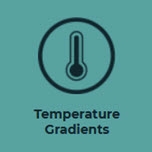

Introduction
 Ever since Georges Claude conducted his pioneering work on Ocean Thermal Energy Conversion (OTEC) nearly 80 years ago[1+2], generations of engineers have dreamt of tapping this enormous renewable resource. Considerable work was initiated after the oil price shocks of the 1970s, but these efforts waned within the following two decades under less favourable political and economic conditions. In the meantime, OTEC advocates and researchers realized that the ocean thermal gradient could be used not only to produce electricity but also in derivative technologies like desalination, cooling, and aquaculture. These other deep ocean water applications (DOWA) were often envisioned as co-products that could help OTEC break its economic glass ceiling. In time, they would follow their own separate development paths.
Ever since Georges Claude conducted his pioneering work on Ocean Thermal Energy Conversion (OTEC) nearly 80 years ago[1+2], generations of engineers have dreamt of tapping this enormous renewable resource. Considerable work was initiated after the oil price shocks of the 1970s, but these efforts waned within the following two decades under less favourable political and economic conditions. In the meantime, OTEC advocates and researchers realized that the ocean thermal gradient could be used not only to produce electricity but also in derivative technologies like desalination, cooling, and aquaculture. These other deep ocean water applications (DOWA) were often envisioned as co-products that could help OTEC break its economic glass ceiling. In time, they would follow their own separate development paths.
A good synopsis entitled OTEC Economics was published in 1992 by Luis Vega[3], who had been instrumental in the execution of some of the most significant OTEC field demonstration projects ever conducted[4+5].
Long-term opportunities
The overall sustainable size of the resource is limited by the rate of formation of deep cold seawater, although unrealistically high estimates based on solar fluxes are often suggested. Orders of magnitude between 3 and 10 TW appear likely, i.e. a range approximately ranging from twice today’s overall electricity consumption to about half of today’s primary energy needs[6-8]. The lower bound reflects a possible degradation of the local thermal gradient under very intensive OTEC scenarios.
Favourable OTEC regions are for the most part far offshore from any land. This suggests that a substantial development of OTEC would necessitate floating systems rather than land-based plants. In either case, tropical locations with steep bathymetries remain the best candidates. They include countless small islands as well as some large, sometimes heavily populated island nations (Indonesia, the Philippines, Papua New Guinea, Taiwan). Brazil has extensive coastlines with excellent ocean thermal gradients, while the Gulf of Mexico could provide the U.S. with good opportunities.
Any significant OTEC development is not likely a) to take place where logistical difficulties are excessive (e.g. lack of infrastructure) and b) to be spearheaded by countries that may not easily bear the risk and burden associated with novel capital-intensive technologies. In a more distant future, a systematic development of remote OTEC regions would probably require the manufacture of energy vectors such as liquid fuels rather than direct power transmission to shore.
REFERENCES:
[1] Claude G. (1930). Power from the tropical seas. Mech. Eng., 52, 1035-1044.
[2] Gauthier M. (1991). The pioneer OTEC operation: “La Tunisie”. Club des Argonautes, Newsletter 2. http://www.clubdesargonautes.org/otec/vol/vol2-1-10.htm
[3] Vega L.A., (1992). Economics of Ocean Thermal Energy Conversion (OTEC). Chap. 7, Ocean Energy Recovery: the State of the Art (R.J. Seymour ed.), ASCE, New York, 152-181.
[4] Vega L.A., Nihous G.C., (1988). At-sea test of the structural response of a large diameter pipe attached to a surface vessel. Proc. Off. Tech. Conf., Houston, U.S.A., Paper 5798, 473-480.
[5] Vega L.A., Evans D.E. (1994). Operation of a small open-cycle OTEC experimental facility. Proc. Oceanology Int. Conf., Brighton, U.K., 5(7), 16 p.
[6] Cousteau J.Y., Jacquier H. (1981). nergie des mers: plan-plan les watts. Chap. 9 in Franais, on a vol ta mer (R. Laffont ed.), ISBN 2221007654, Paris.
[7] Nihous G.C., (2005). An order-of-magnitude estimate of Ocean Thermal Energy Conversion resources. J. Energy Res. Tech., 127(4), 328-333.
[8] Nihous G.C., (2007). A preliminary assessment of Ocean Thermal Energy Conversion (OTEC) resources. J. Energy Res. Tech., 129(1), 10-17.